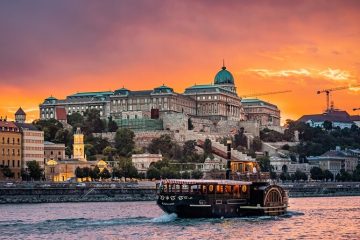The Danube River: A Vital Waterway in Europe

Introduction
The Danube River, Europe’s second-longest river, flows through ten countries and is a crucial waterway for transportation, agriculture, and tourism. Its significance extends beyond geography, symbolising cultural and economic connections throughout the continent. Understanding the Danube’s impact helps illuminate various socio-economic dynamics in Central and Eastern Europe, making it a topic of increasing relevance in today’s interconnected world.
Geographical Overview and Importance
Originating in the Black Forest of Germany, the Danube spans approximately 2,860 kilometers, passing through Austria, Slovakia, Hungary, Croatia, Serbia, Romania, Bulgaria, Moldova, and Ukraine before emptying into the Black Sea. Its extensive reach provides inland access to numerous countries, playing a pivotal role in trade and transport. In 2023, it was reported that about 20% of Europe’s inland shipping traffic occurs along the Danube, highlighting its vital role in the European Union’s logistics network.
Environmental and Cultural Significance
The Danube is not only an economic artery but also a vital ecological zone. Various UNESCO World Heritage Sites, including the Danube Delta, showcase the river’s rich biodiversity and natural landscapes. The delta, a convergence of rivers, is considered one of the most important wetlands in Europe and hosts rare species, making conservation efforts essential. Moreover, the river has immense cultural significance, inspiring artists, musicians, and writers through centuries. The Danube has also become synonymous with the notion of European unity, serving as a geographic reminder of shared histories and interconnected destinies.
Current Challenges and Future Outlook
Despite its importance, the Danube faces significant challenges, including pollution, invasive species, and the impacts of climate change. Reports indicate a rising trend in industrial pollution and urban runoff, particularly near major cities like Budapest and Vienna, threatening its delicate ecosystems. Efforts are underway at both national and international levels to address these issues, including initiatives for stricter emissions controls and river management.
Looking forward, the Danube’s role in economic transport is predicted to grow. With increasing interest in green logistics, more shipping companies are pivoting towards eco-friendly practices, potentially enhancing the river’s appeal as a sustainable transport route.
Conclusion
The Danube River remains a vital component of Europe’s cultural and economic landscape. As awareness of its challenges increases, collective actions towards its preservation and sustainable use are critical for future generations. Engaging with the river’s significance and challenges not only elevates public awareness but also reinforces its position as a cornerstone in the narrative of Europe’s interconnectivity.







